Thanks again to Chile’s love of feriados (bank holidays), me and a few others were able to escape the city and smog for another long weekend.
Lucy and I took a 9-hour overnight bus to Temuco (capital of Chile’s southern Araucanía Region, and the youngest of Chile’s main cities) where we joined some other friends – Polly, Gillian and Carmen – and caught a bus together to Melipeuco – a small town which sits at the base of the Andes.
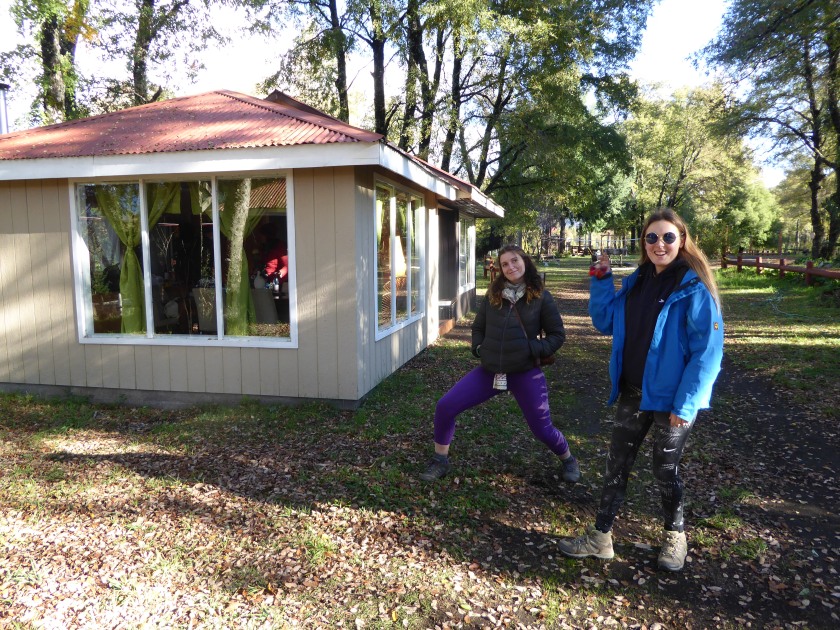
Our cabin
We were staying in a little cabaña all to ourselves just outside the town, surrounded by woods and complete with 3 layers of blankets on each bed and a stove heater (the south of Chile is cold this late into autumn). Lucy and Polly – in true rustic, DIY style – spent an hour getting the fire lit, throwing in anything flammable we could gather (receipts, egg cartons, chewing gum wrappers, toilet roll) in an effort to get the logs to catch fire. The cosiness of the cabin (in the woods) was only slightly blemished by the electricity flickering creepily, and eventually giving in until 3AM (when Poll was woken up by the kettle boiling – I had put it on whilst there was no power, considering this to be very forward-thinking).
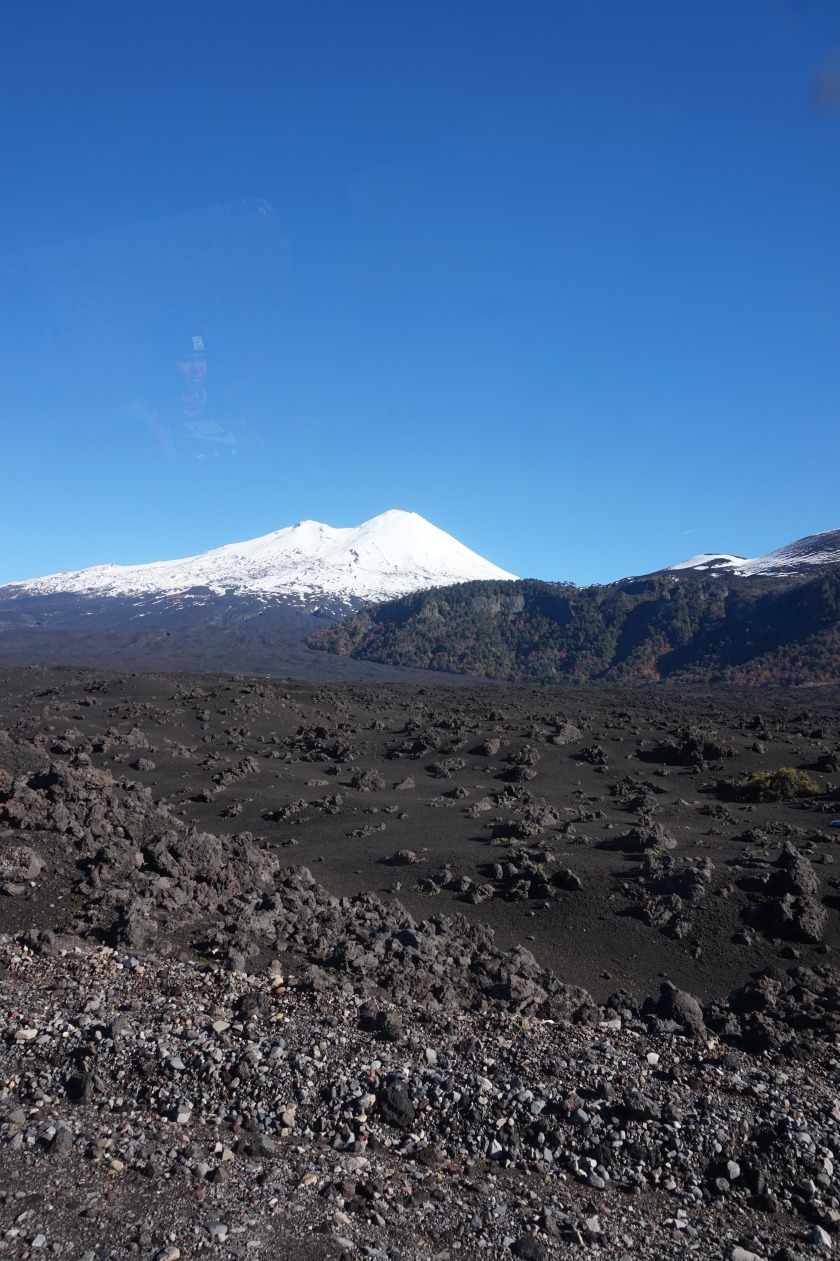
Magma rock and volcán Llaima
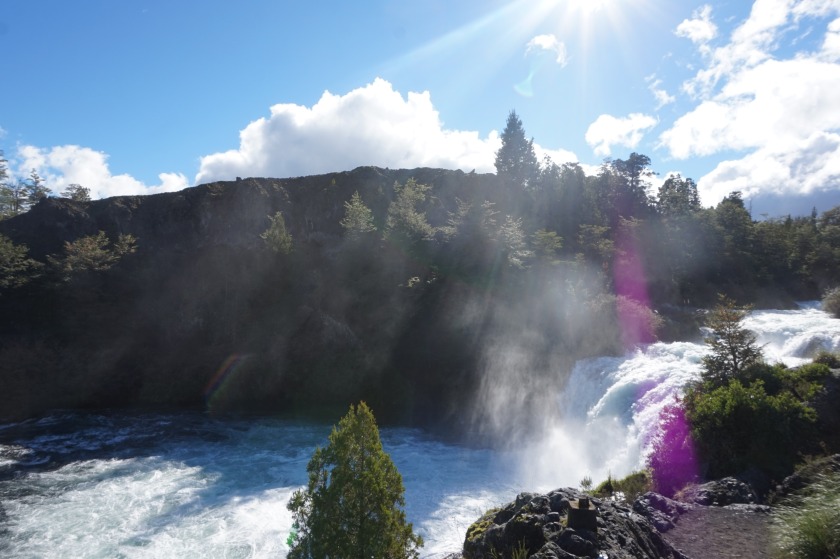
Waterfall seen on our first day
In typical Chilean friendliness, when we arrived at the cabin, our host’s son drove us to a nearby waterfall, and then onto a viewpoint looking across a plain of dark rock that was formed from the lava spat out by Chile’s most active volcano – volcán Llaima, the name meaning ‘blood veins’ in the Mapuche language Mapudungun.
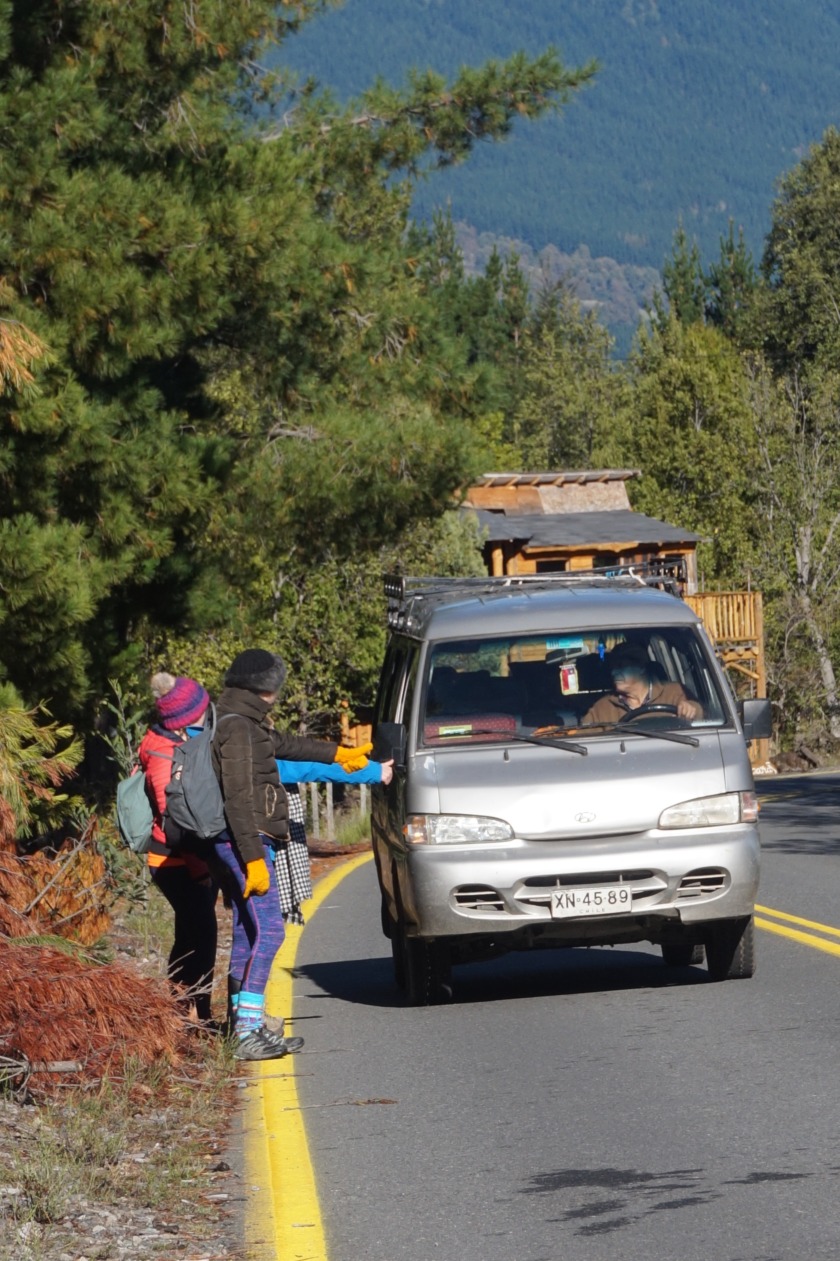
Hitch-hiking

Volcán Llaima
We hitch-hiked to Parque Nacional Conguillío on both of our days in Melipeuco. The first to have a short look around before it got dark, and did a miniature trek reading plaques about different Mapuche legends. The Mapuche people – who have long fought for the Araucanía region as their own and their imprint is more visible here than in other parts of Chile I have been to – believe that Llaima volcano is a living spirit, and her eruptions serve as punishment against the sins of the world: the earth’s imbalances taking shape in the form of spewing lava.
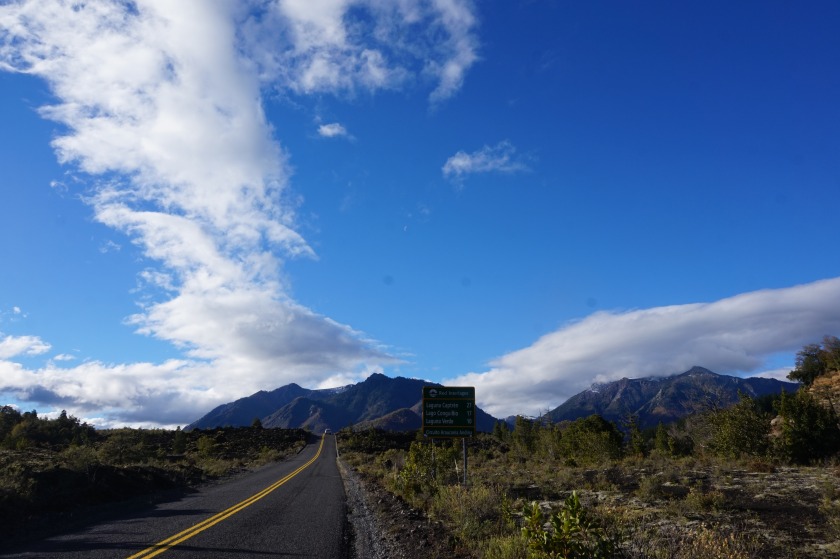
The Park

Canyons
On our second day, we opted for a more adventurous trail, and hitch-hiked deeper into the park – all of us wide-eyed as we drove past the plains of magma rock, snow-dusted mountain peaks and deep, dramatic canyons. We hiked through a patch of the woods and, like kids, were on a quest to discover the forest’s oldest inhabitant – an enormous, 1,800-year-old araucaria tree. In the afternoon, we picnicked beside Lago Conguillío (in total Conguillío has 608 sq km of lake): contemplating the silver water set against a radical backdrop of mountains, and framed by the forest’s autumnal oranges and reds. It was Quite Something. To mine and Gillian’s surprise and childlike joy, when we dipped our fingers hesitantly into the lake (preparing ourselves for Antarctic-temperatures) the water was warm (lukewarm – but warm), probably due to hot springs hidden somewhere in this treasure-trove of natural delights.

A very old tree
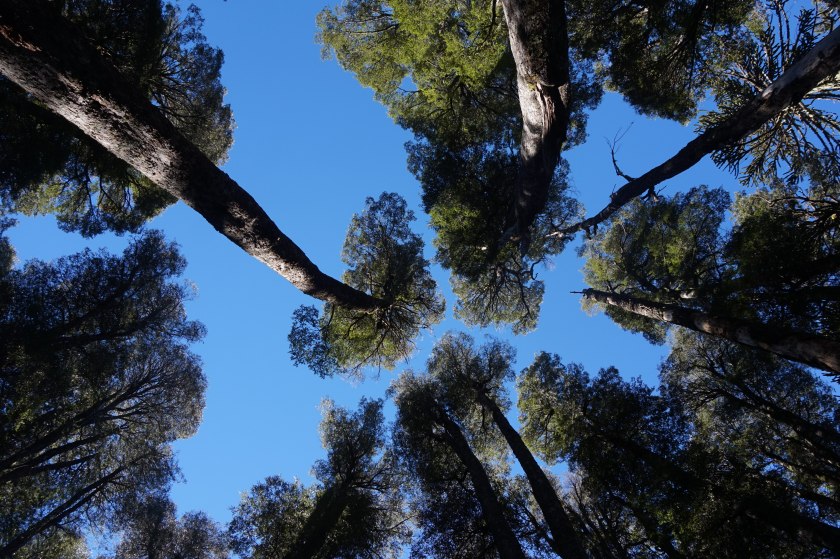
Araucaria forest
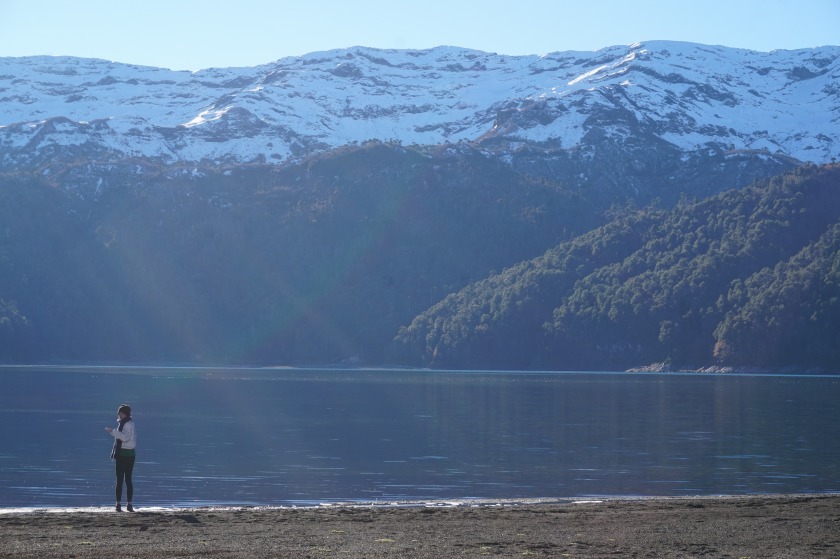
Lago Conguillío
Our return hitch-hike was in the back of a pick-up, which was both Stunning and Freezing – the temperature slightly improved by swigging from the 1.5 litre box of wine we had brought along (true friends are those who support ideas like this).

Autumn colours
I hadn’t heard much about Parque Nacional Conguillío before going there, surprising as it has turned out to be the most beautiful place I’ve visited in this country so far – I would strongly recommend visiting during the autumn months when the reds and oranges and yellows are overwhelmingly beautiful.

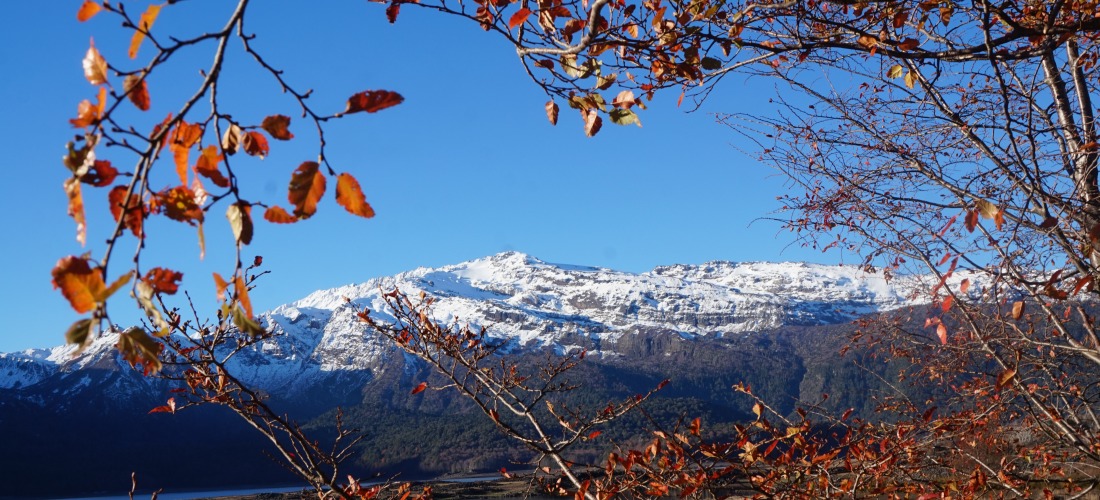
Beautiful pictures. My daughter has been through Chile from the very south to the very north, stopping at Santiago for 5 days. She’s now in Bolivia en route to Peru. So much and so many countries to cram in to 14 weeks.
LikeLike